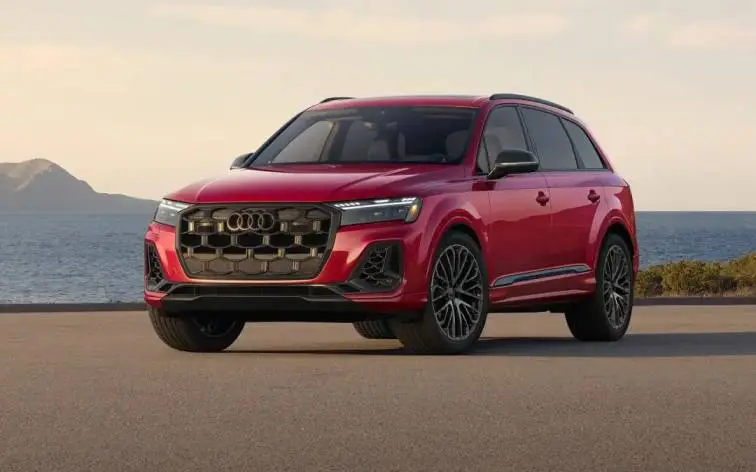Tesla recently tested the Cybertruck’s off-road capabilities at Hollister Hills State Vehicle Recreation Area (SVRA) in the Gabilan Mountains. In the latest videos of the Cybertruck at Hollister Hills, one of the all-electric pickup trucks is climbing a dirt road. Meanwhile, the other is making rounds virtually the rest of the rough road course.
The video was initially uploaded by Dima Zenuik. Some comments on Zenuik’s posts noticed the pace the Cybertruck took the uphill climb, stating that Tesla’s pickup truck seemed to be struggling. A prune shared by The Kilowatts of an R1T climbing a dirt road shows that Rivian’s all-electric pickup truck moreover seemed to struggle climbing but managed to do it nonetheless. The Rivian R1T’s performance shows how challenging climbing up a dirt road can be for any pickup truck.

Going romping is something muddled, but at the same time it's very basic. Indeed, there are things like high level foothold control frameworks and complex dampers and extravagant air admissions that effect rough terrain execution, yet the fundamental decider in how great a vehicle is rough terrain is something you can survey with only a basic look. Which is the reason I'm sure when I tell you: The Tesla Cybertruck won't be "awesome rough terrain vehicle." Yet it will likely be a decent rough terrain truck. I mean this.
The Cybertruck has the makings of an extraordinary rough terrain pickup truck, yet it doesn't have the makings of the GOAT wilderness romper, regardless of to what lengths Tesla fans will go for it to be. Furthermore, honestly: The Cybertruck doesn't need to outflank the Jeep Wrangler on the Rubicon to be a great truck. I believe it will turn out to be loads of tomfoolery, and having seen one only yesterday on the streets of LA, I really think it looks perfect.

Paying attention to that, and seeing Rogan's response helped me a ton to remember the iPhone swarm making sense of innovation that Android clients have had for quite a long time. The new iPhone 8 is in a real sense the best cell phone of all time. It has remote charging and optical picture adjustment it's progressive!" you'd hear iPhone-ers say in late 2017, five years after the Nokia Lumia 920 Windows Telephone appeared with the two highlights and two years after the Samsung Cosmic system S6 emerged with both, also.
I'm generally jabbing fun, in light of the fact that truly iPhone clients have barely any familiarity with Android telephones since they couldn't care less, and numerous Tesla proprietors have hardly any insight into rough terrain vehicles since they couldn't care less. What's more, it's fine; I commend both Apple and Tesla for having made a client base that is so given and centered. However, we should be genuine: Free suspension with air springs is some truly, truly essential stuff.
When it's all said and done, damn, take a gander at this 2011 Jeep Excellent Cherokee pound some rough terrain trails with air suspension. Also, that reminds me, the genuine beginning of this entire air springs+independent suspension rough terrain development was the presentation of the 2002 Territory Wanderer.

All the more significantly, we want to perceive that each electric rough terrain vehicle will have this equivalent arrangement. For bundling, drivetrain proficiency, and unsprung-weight reasons, the strong pivot thought about by numerous a definitive rough terrain suspension for its strength and enunciation is more than likely going to kick the bucket with the gas powered motor. This implies all vehicles will go to autonomous suspension.
These wilderness rompers will likewise need to go to air suspension too, in light of the fact that the ground freedom expected for going romping accompanies very huge of a hit to generally speaking vehicle drag (and in this way range) air suspension is the best way to have great leeway while going romping and low drag in the city.
Three Things That Could Hold Back The Cybertruck
#1: Articulation
In any case, now that we've laid out that the Cybertruck's suspension arrangement is not even close to progressive (except if they have a stunt at their disposal that I'm not seeing), I can perceive you a piece about why the truck won't be the absolute best rough terrain vehicle out there.
As far as one might be concerned, while free suspension helps offer some ground leeway benefits over out pivot, strong hub vehicles simply roll over the tallest snags in their manner; this lifts the diff on that hub high up off the ground, away from weaknesses. In the event that you really do hit your diff on something while rock-slithering, it's not liable to break as Musk says in the clasp, except if you're driving extremely quick for such rough terrain conditions. So the ground freedom advantage is genuine, yet it's not really a humongous advantage rough terrain given commonplace rough terrain driving behavior.
#2: Traction
Feel free to watch the Rivian R1T endeavor to pass through a little V-score in the uneven territory, and perceive how the nose winds up raised in the air because of the vehicle's absence of flex. With one less wheel on the ground to move force to the street, the Rivian's foothold control framework needs to kick in, and as you can find in the clasp above: It comes up short amazingly. The driver winds up with his foot squashed hard on the gas pedal, and the truck simply doesn't move.
While I encountered nothing very that grievous while going 4x4 romping the Rivian R1T, I saw that the footing control framework was traditionalist, and caused the vehicle to feel somewhat more flinchy and less loose as it attempted to move through troublesome territory.
Why? You could inquire. Shouldn't electric drivetrains be a definitive in rough terrain impetus given that they can change yield quickly (in contrast to an ICE)? It is quite difficult, as I wrote in my audit of the Rivian R1T's four-engine framework.
#3: Geometry
I notice in the lede of this article that rough terrain capacity is something you can survey with only a fast look at a vehicle, and that is fairly obvious. Clearly, there are sure components that need to exist for the vehicle to be great rough terrain four-wheel drive, fair equipping, great tires, an alright footing control framework and so on yet the main component of an incredible rough terrain vehicle is good math: That implies a minimized generally size, low weight, and little shades. This is where the Cybertruck will be compromised, yet not under any condition other than that: It's a pickup truck. Pickup trucks simply aren't tip top rough terrain vehicles.
There's an explanation that, from the beginning of time, the absolute best rough terrain machines have been SUVs: The Second Great War Jeep, the Toyota FJ, the Land Meanderer Safeguard. They all consolidate strong axles with incredible calculation, which it's difficult to offer when you have a pickup bed that must be something like five feet in length. You're either must have that length in the wheelbase or in the back overhang, and neither offers you courtesies rough terrain.
That is the thing about rough terrain capacity, particularly rock slithering: Not at all like dashing, extravagant electronic stunts won't save you. Going mud romping is a straightforward game: get great force to every one of the wheels, lock them together, and keep the general aspects and shades little that is the means by which you win.
There's a justification for why a Nissan GT-R can out-deal with and out-speed up any vehicle from the 1940s, however with regards to going mud romping, one could suggest the case that The Second Great War Jeep remains even after very nearly 80 years the best rough terrain foundation of all.











